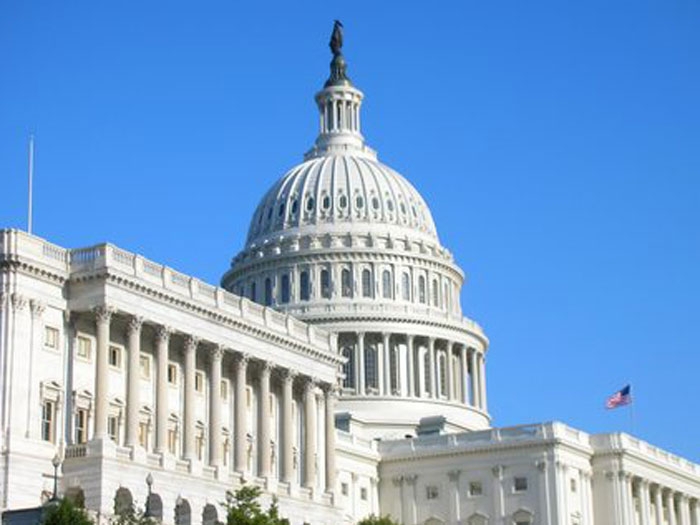
LCS: Senate panel hears contrasting views
Written by Nick Blenkey
DECEMBER 2, 2016 — Testimony given yesterday at a hearing before the Senate Armed Services Committee underscored continuing differences of opinion on the Navy’s Littoral Combat Ship (LCS).
Some of the sharpest criticism came in testimony from Paul L. Francis, Managing Director, Acquisition and Sourcing Management, GAO, which is now available as a GAO report.
The GAO says that the Navy’s vision for the program has evolved significantly over the last 15 years, “reflecting degradations of the underlying business case.”
“Initial plans to experiment with two different prototype ships adapted from commercial designs were abandoned early in favor of an acquisition approach that committed to numerous ships before proving their capabilities. Ships were not delivered quickly to the fleet at low cost. Rather cost, schedule, and capability expectations degraded over time. In contrast, a sound business case would have balanced needed resources—time, money, and technical knowledge—to transform a concept into the desired product.”
Now, says the GAO, Congress is facing critical acquisition decisions for fiscal years 2017 and 2018 that have significant funding and oversight implications.
First, the Navy has already requested funding to buy two more baseline LCS ships in fiscal year 2017. Second, early next year, the Navy plans to request authorization for a block buy of all the 12 frigates that are planned to succeed the LCS and to include funding in the fiscal year 2018 budget request for the lead frigate.
The GAO says that making these commitments now could make it more difficult to make decisions in the future to reduce or delay the program should that be warranted.
” A more basic oversight question today is whether a ship that costs twice as much yet delivers less capability than planned warrants an additional investment of nearly $14 billion. GAO has advised Congress to consider not funding the two LCS requested in 2017 given its now obsolete design and existing construction backlogs. Authorizing the block buy strategy for the frigate appears premature. The decisions Congress makes could have implications for what aspiring programs view as acceptable strategies.”
Read the report HERE
On budget and below cost cap
Needless to say, the Navy’s position is somewhat different. It was set out in prepared testimony at the same hearing submitted by Sean J. Stackley, Assistant Secretary of the Navy (Research, Development and Acquisition) and VADM Thomas S. Rowden, Commander, Naval Surface Forces.
Here’s an extract:
The designs are stable, new shipyard facilities are in place, with a right-sized, qualified work force, and both shipyards and industry teams are in full serial production in order to ensure each can deliver two ships per year. Today, the LCS program is on budget and below the Congressional cost cap.
The block buy contracts for the Fiscal Year (FY) 2010 through FY 2016 ships resulted in continued reductions in the LCS shipbuilding program’s production unit costs, and both shipyards are building these ships in an affordable manner.
With a stable design and a mature production line, we have been able to make significant progress in completing both ship and mission package testing requirements. Both variants have completed initial operational test and evaluation (IOT&E) and have achieved Initial Operational Capability (IOC). This year both variants conducted Director, Operational Test and Evaluation (DOT&E) approved Live Fire Test and Evaluation Full Ship Shock Trial (FSST) events. Our detailed analysis of the shock trial’s results is in progress but all test objectives were met. Both the Freedom and Independence variant ships demonstrated the ability to survive the degrading effects of the underwater shock event associated with the close-proximity detonation of a 10,000 pound charge. We have now completed all required testing for the ships themselves and are incorporating lessons learned from that testing into future LCS and FF ships
The testimony from Assistant Secretary Stackley and Admiral Rowden concluded by saying that the LCS and FF Classes close critical warfighting gaps and will provide much-needed MCM, ASW, and SUW capability at an affordable cost, freeing up the higher end multi-mission large surface combatants to focus on their primary missions
“Looking ahead, the Navy is planning for the next generation Fleet, including SSC (Small Surface Craft), using the established requirements generation process to determine what warfighting gaps will be present and what capabilities the future SSC will require in order to fill those gaps. When completed, we look forward to briefing you on the outcome of this analysis and the composition of the future Fleet.
“The Navy’s role in providing for our national security strategy includes ensuring freedom of navigation for all maritime traffic, providing reassurance to our partner nations, and deterring those who would challenge us. As more LCS ships are deployed forward, these innovative ships will deliver the persistent presence our allies and partners desire and our nation’s security demands consistent with this role.”
Read that testimony HERE





Leave a Reply
You must be logged in to post a comment.